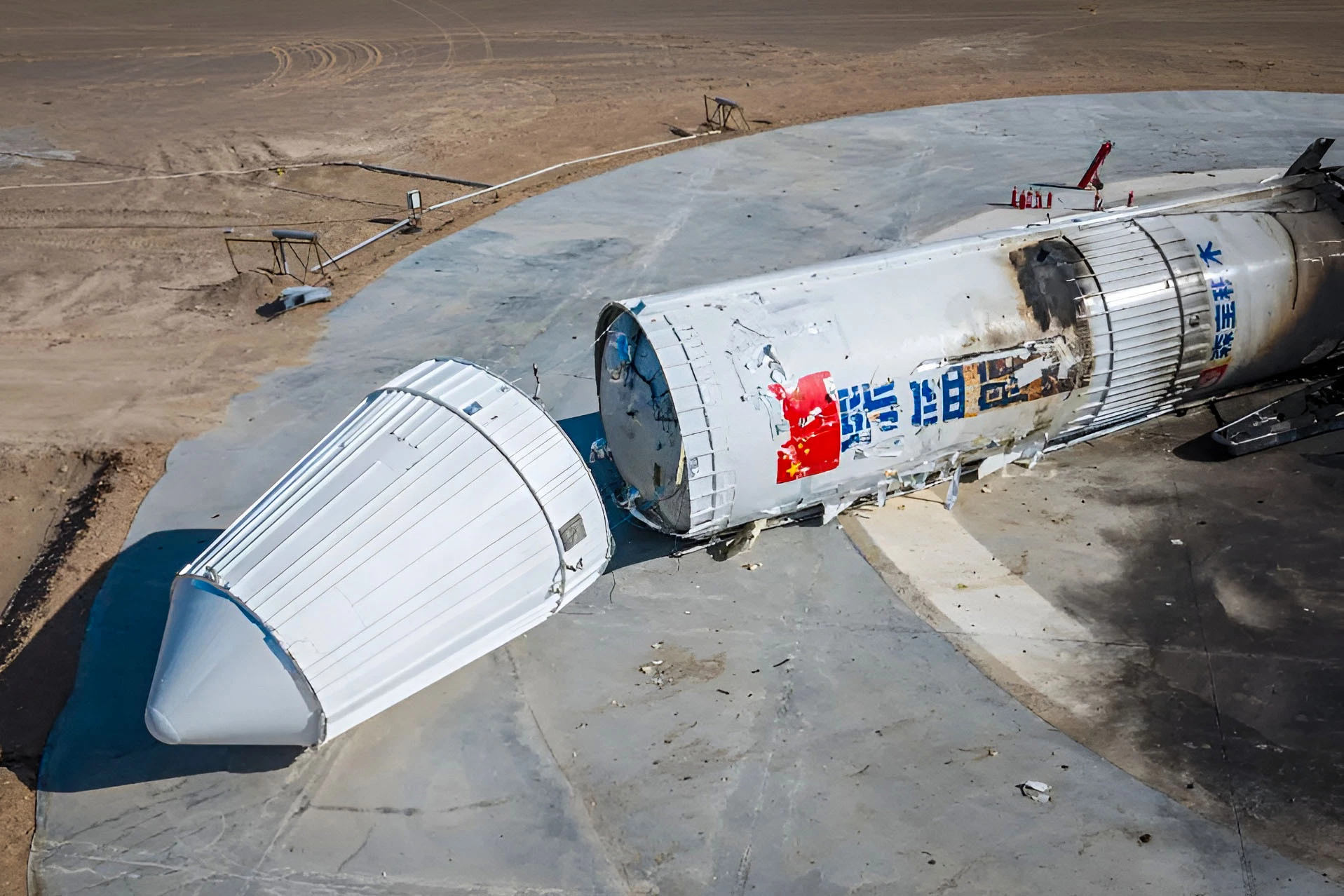China's Nebula-1 reusable first-stage rocket booster took a bit of a tumble on September 22, 2024 when its nearly perfect high-altitude vertical flight ended when it got a bit dented as it crashed into the ground during the powered landing attempt.
With SpaceX making powered landings of its reusable Falcon 9 boosters with almost monotonous regularity, it's only natural that other companies would try to emulate this with an eye on reaping similar commercial benefits. One of these is Deep Blue Aerospace, which is a private Chinese company headquartered in Jiangsu province on the Chinese coast that has been developing its Nebula family of orbital rockets since 2016.
The Sunday test flight from the Deep Blue Aerospace Ejin Banner Spaceport in Inner Mongolia was intended to test the systems of the company's Nebula-1 booster, its ability to operate after stage separation, and to return to Earth for a powered landing. Powered by an open-cycle variable thrust Leiting-20 (Thunder-20) electric-pump-fed kerosene/liquid oxygen engine capable of 20 tonnes of thrust, the rocket has already flown on low altitude tests of under 100 m (330 ft) and is now progressing to flights of up to 100 km (62 miles) in altitude.
The latest test lasted 179 seconds and according to Deep Blue it achieved 10 out of 11 flight objectives. Unfortunately, no. 11 was landing. That didn't come off so well.
During the test, the Nebula-1 lifted off on all three engines, cutting to only the center engine as it approached maximum altitude, which has not been disclosed. It then descended with the center engine reducing the downward speed as it homed in on the landing pad.
That's when things went wrong.
According to post-flight analysis, the rocket suffered a malfunction in its control system and carried out its landing maneuver and cut out its engine while it was still up in the air. The Nebula-1 crashed to Earth, but there was no explosion, most likely because it had used up most of its fuel by then.
The company says that it will use the results of the test for its next flight in November.
Source: Deep Blue







